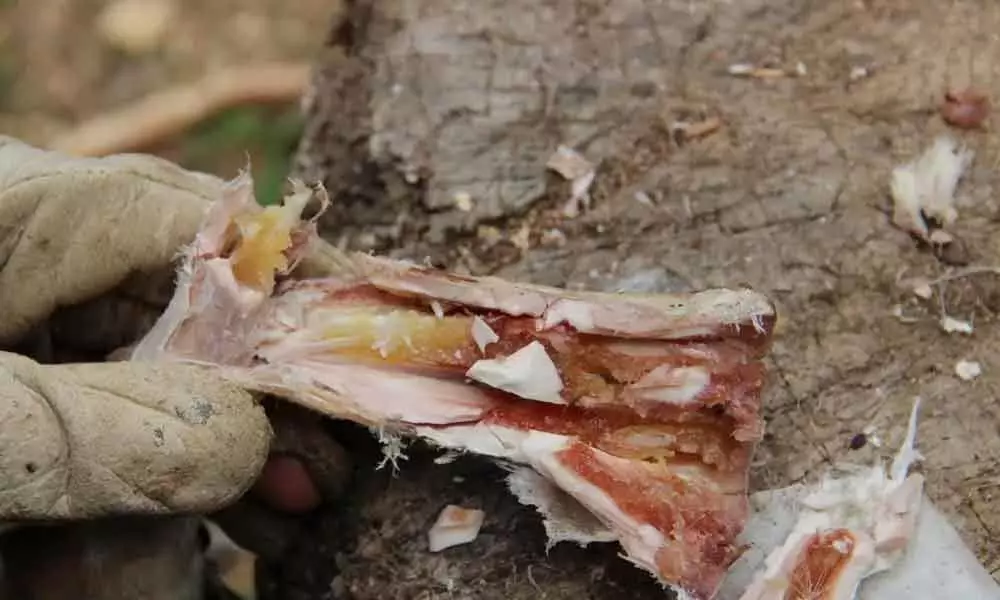Live
- Rajadhiraaj: Love. Life. Leela
- Students immerse in nature in Chilkur forest
- Sri Aurobindo’s vision: Bridging the gap for holistic human evolution
- Sri Radha Govinda Ratha Yatra conducted
- A feast of music, dance and drama
- Mohan Babu denies absconding amid legal controversy
- Swift City to boost industrial growth in Bengaluru
- Allu Arjun walks out free after spending night in jail
- Congress harbours no grudge against any actor: TPCC chief
- Allu Arjun meets Upendra after release from prison, wishes for his ‘UI’ film
Just In
Early Humans Stored and Drank Bone Marrow Like We Consume Canned Soup Today


Prehistoric people may have consumed animal bone marrow like how modern humans eat canned soup, according to a study.
Prehistoric people may have consumed animal bone marrow like how modern humans eat canned soup, according to a study.
The research, published in the journal Science Advances, showed evidence of the storage and delayed consumption of animal bone marrow at Qesem Cave in Israel -- the site of many major discoveries about early humans who lived 400,000 years ago.
According to the researchers, including those from Tel Aviv University (TAU) in Israel, the new study provides direct evidence that early stone-age people saved animal bones for up to nine weeks before feasting on them inside Qesem Cave.
"Bone marrow constitutes a significant source of nutrition and as such was long featured in the prehistoric diet," said co-author of the study Ran Barkai from TAU.
Until now, scientists believed that the early humans immediately consumed marrow following the procurement and removal of soft tissues, the study noted.
"In our paper, we present evidence of storage and delayed consumption of bone marrow at Qesem Cave," Barkai said.
The finding, according to the researchers, offers insight into the socioeconomics of the humans who lived at Qesem.
The researchers added that prehistoric humans brought selected body parts like limbs and skulls from the carcasses of the animals they hunted such as fallow deer.
The early humans may have stripped of meat and fat at the hunting scene and left them there, the study noted.
"We found that the deer leg bones, specifically the metapodials, exhibited unique chopping marks on the shafts, which are not characteristic of the marks left from stripping fresh skin to fracture the bone and extract the marrow," said co-author Jordi Rosell from Rovira i Virgili University in Spain.
The researchers mentioned that the deer's long limb bones were kept at the cave covered in skin to preserve the marrow for consumption when needed.
To test this theory, the researchers conducted an experimental series on deer limb bones, controlling the bone marrow's exposure time and environmental parameters, combined with chemical analyses.
Comparison of the archaeological and experimental results allowed the researchers to determine that the marrow fat degraded at a slow rate of up to nine weeks of exposure.
"We discovered that preserving the bone along with the skin, for a period that could last for many weeks, enabled early humans to break the bone when necessary and eat the still nutritious bone marrow," said Blasco.
Barkai added that the bones were used as 'cans' to preserve the marrow for a long period until it was time to take off the dry skin, shatter the bone and eat the contents.

© 2024 Hyderabad Media House Limited/The Hans India. All rights reserved. Powered by hocalwire.com






